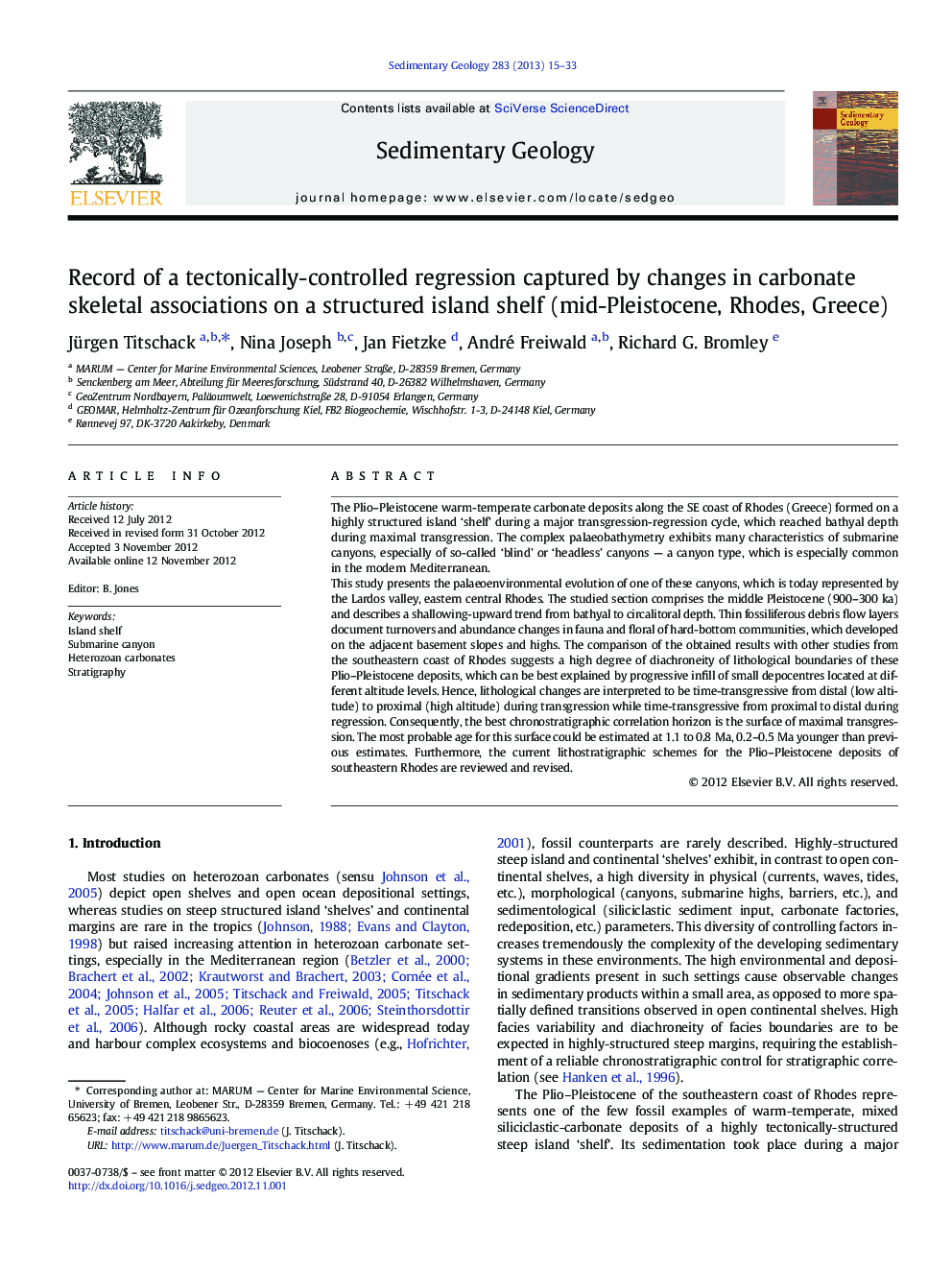| Article ID | Journal | Published Year | Pages | File Type |
|---|---|---|---|---|
| 4689577 | Sedimentary Geology | 2013 | 19 Pages |
The Plio–Pleistocene warm-temperate carbonate deposits along the SE coast of Rhodes (Greece) formed on a highly structured island ‘shelf’ during a major transgression-regression cycle, which reached bathyal depth during maximal transgression. The complex palaeobathymetry exhibits many characteristics of submarine canyons, especially of so-called ‘blind’ or ‘headless’ canyons — a canyon type, which is especially common in the modern Mediterranean.This study presents the palaeoenvironmental evolution of one of these canyons, which is today represented by the Lardos valley, eastern central Rhodes. The studied section comprises the middle Pleistocene (900–300 ka) and describes a shallowing-upward trend from bathyal to circalitoral depth. Thin fossiliferous debris flow layers document turnovers and abundance changes in fauna and floral of hard-bottom communities, which developed on the adjacent basement slopes and highs. The comparison of the obtained results with other studies from the southeastern coast of Rhodes suggests a high degree of diachroneity of lithological boundaries of these Plio–Pleistocene deposits, which can be best explained by progressive infill of small depocentres located at different altitude levels. Hence, lithological changes are interpreted to be time-transgressive from distal (low altitude) to proximal (high altitude) during transgression while time-transgressive from proximal to distal during regression. Consequently, the best chronostratigraphic correlation horizon is the surface of maximal transgression. The most probable age for this surface could be estimated at 1.1 to 0.8 Ma, 0.2–0.5 Ma younger than previous estimates. Furthermore, the current lithostratigraphic schemes for the Plio–Pleistocene deposits of southeastern Rhodes are reviewed and revised.
► The studied outcrop documents the uplift of Rhodes during the middle Pleistocene. ► The Plio–Pleistocene stratigraphy of Rhodes is reviewed and revised. ► The studied sedimentary unit is interpreted as submarine canyon deposit. ► Diachroneity of canyon deposits is most likely due to different altitudes of small depocentres.
